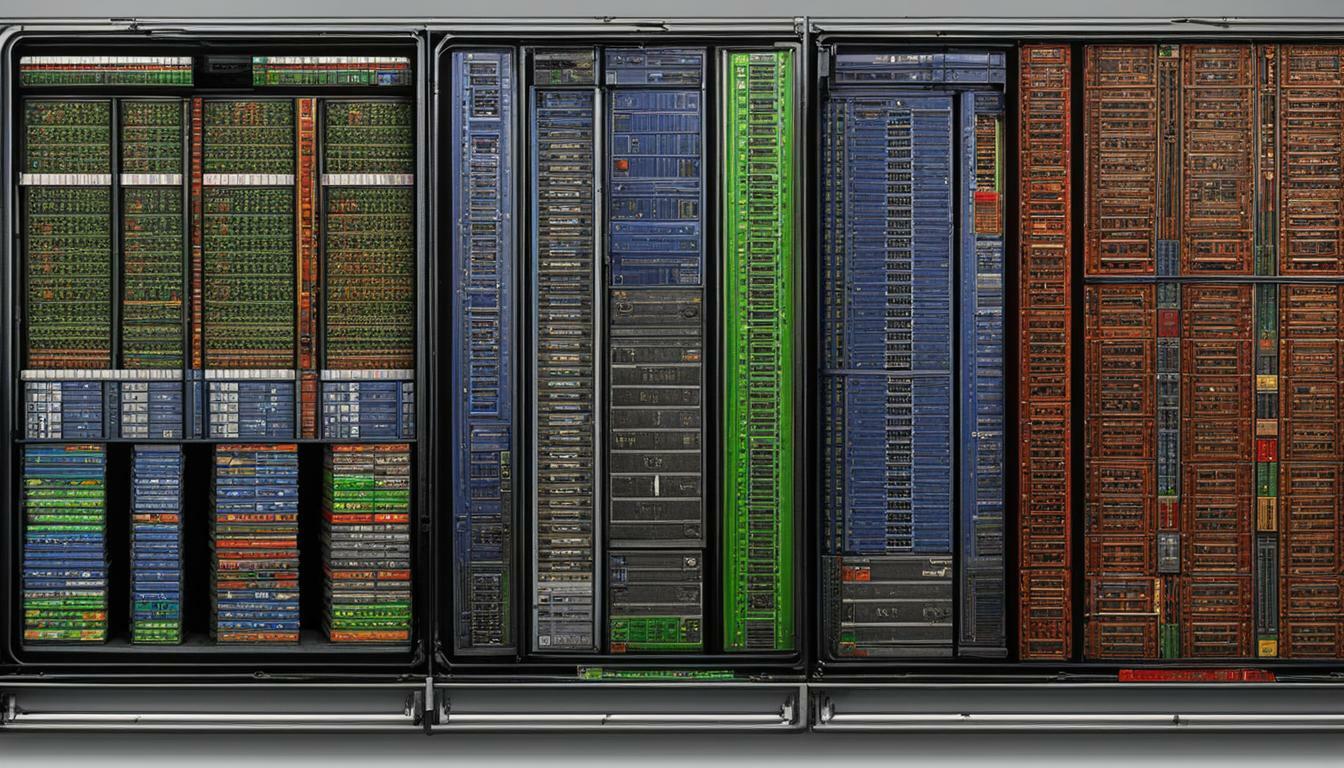Introduction
In today’s digital age, mobile applications have become an integral part of our lives. From ordering food and managing finances to staying connected with loved ones, we rely heavily on these apps to simplify our daily tasks.
Behind the scenes, mobile app development frameworks play a crucial role in bringing these applications to life. These frameworks provide developers with the necessary tools and resources to create robust, efficient, and visually appealing apps for both iOS and Android platforms.
The Importance of Mobile App Development Frameworks
Mobile app development frameworks act as a foundation for building cross-platform apps that can run seamlessly on multiple devices. They offer various benefits like faster development time, code reusability, and easy maintenance. As opposed to developing separate native apps for each platform (which requires different programming languages), using a framework allows developers to write code once and deploy it across multiple platforms.
By leveraging mobile app development frameworks like React Native and Flutter, companies can reduce costs associated with app development by streamlining the process and minimizing the need for platform-specific expertise. Additionally, these frameworks provide access to vast libraries of pre-built components that expedite development while maintaining high-quality user experiences.
Brief Overview of React Native and Flutter
“React Native vs. Flutter” – a debate that has sparked immense interest among developers in recent years.
React Native is an open-source framework developed by Facebook that uses JavaScript as its primary programming language. It allows developers to build native-like mobile applications using reusable UI components originally designed for building web interfaces using ReactJS.
Flutter, on the other hand, is an open-source UI toolkit created by Google. It employs Dart as its programming language and provides a comprehensive set of widgets specifically designed for creating aesthetically pleasing interfaces across different platforms.
Flutter’s main focus is on delivering high-performance and visually appealing applications. In the next sections, we will delve deeper into the features, benefits, and drawbacks of both frameworks to help you make an informed decision when choosing between React Native and Flutter for your mobile app development needs.
React Native: Unveiling its Features and Benefits
Origins and Background of React Native
React Native, born out of Facebook’s internal hackathon project, was first introduced in 2015. It quickly gained attention due to its ability to develop mobile apps using JavaScript.
Leveraging the power of ReactJS, a popular JavaScript library for building user interfaces, React Native allows developers to use a single codebase to create applications for both iOS and Android platforms. Unlike traditional mobile app development frameworks that rely on WebView components for rendering, React Native takes a different approach.
It uses native components under the hood, resulting in better performance and a more authentic user experience. This unique approach has attracted many developers and provided them with an efficient way to build high-quality mobile applications.
Cross-platform Compatibility and Code Reusability
One of the standout advantages of React Native is its exceptional cross-platform compatibility. With React Native, developers can write code once and deploy it across multiple platforms without compromising on performance or functionality. This saves significant time and effort by eliminating the need for platform-specific code.
Moreover, thanks to the concept of “write once, use anywhere,” React Native promotes code reusability at an unprecedented level. Developers can reuse a substantial portion of their existing codebase when developing for different platforms, resulting in faster development cycles and reduced maintenance costs.
Performance and Speed Considerations
React Native’s performance is often touted as one of its strongest features. By utilizing native components rather than relying solely on WebView-based approaches, the framework achieves near-native levels of performance. This enables smooth animations, responsive UI interactions, and seamless navigation within the application.
Furthermore, React Native leverages JavaScript runtime environments like V8 (on Android) or JavaScriptCore (on iOS), ensuring fast execution speeds. Although there may be occasional performance trade-offs compared to fully native development, React Native’s performance is generally impressive and more than sufficient for most applications.
UI Components and Native-like Experience
React Native offers a wide range of pre-built UI components that closely resemble native elements. These components provide a consistent look and feel across platforms, allowing developers to create apps that blend seamlessly into the user’s device environment. From buttons and text inputs to navigation bars and list views, React Native provides an extensive library of UI components ready for use.
Additionally, React Native allows developers to customize these components or even build their own using JavaScript. This flexibility ensures that developers can design unique and visually appealing user interfaces according to their specific requirements while maintaining the familiarity of native app experiences.
Community Support and Ecosystem
React Native has garnered a robust community of passionate developers who actively contribute towards its growth. This vibrant community provides extensive support through forums, tutorials, documentation, open-source libraries, and plugins tailored for different use cases.
Developers can leverage this vast ecosystem to accelerate their workflow, troubleshoot issues effectively, and access cutting-edge solutions shared by experts in the field. Moreover, React Native’s popularity has led to the creation of numerous third-party packages that extend its capabilities beyond what is offered out-of-the-box.
These packages cover various functionalities such as geolocation services, push notifications, social media integrations, analytics tools, and much more. The availability of such plugins further enriches the development experience while simplifying complex tasks.
Overall, React Native offers an array of features and benefits that make it a compelling choice for mobile app development. Its origins from Facebook’s internal project have given rise to a powerful framework with cross-platform compatibility, stellar performance characteristics, vast UI component library with native-like experiences possibilities as well as an active community providing continuous support – all contributing towards its popularity in the mobile app development landscape.
Flutter: Embracing its Unique Capabilities
Introduction to Flutter’s origin story
Flutter, developed by Google, emerged on the app development scene relatively recently. It was unveiled at the Dart Developer Summit in 2015 but gained substantial traction in subsequent years.
The primary objective of Flutter is to provide developers with a seamless and efficient framework for building native-like apps across multiple platforms. Its unique selling point lies in the fact that it allows developers to create visually stunning and high-performance applications using a single codebase.
Dart programming language for building apps
At the heart of Flutter lies Dart, an object-oriented programming language specifically designed for crafting applications. Dart offers several advantages for developers due to its simplicity and ease of use.
With its clean syntax and familiar keywords, Dart provides a relatively gentle learning curve compared to other languages. Its strong type system helps catch bugs during development, ensuring increased robustness and stability in deployed apps.
Hot reload feature for faster development iterations
One of the standout features of Flutter is its hot reload capability, which greatly enhances productivity during app development. With hot reload, changes made to the code are instantly reflected on the emulator or physical device without requiring a full app restart.
This rapid feedback loop enables developers to experiment, iterate, and fine-tune their creations swiftly. This feature proves particularly advantageous when working on UI elements or tweaking animations as it allows for real-time visualization of changes.
Customizable UI widgets with Material Design or Cupertino style
Flutter offers an extensive collection of customizable UI widgets that can be tailored according to specific design requirements. These widgets adhere seamlessly either to Google’s Material Design guidelines or Apple’s Cupertino style, enabling developers to create visually consistent experiences across Android and iOS platforms respectively. With these pre-built widgets at their disposal, developers can focus more on creating a user-friendly and visually appealing interface rather than reinventing the wheel.
High performance with direct rendering on the screen
Flutter’s architecture enables direct rendering of visuals onto the screen, bypassing intermediate layers and thus ensuring high performance. By utilizing Skia, an efficient 2D graphics engine, Flutter delivers smooth animations and seamlessly responsive interfaces. This approach also contributes to an optimized user experience by minimizing lag or janky transitions that can negatively impact usability.
IV: Comparing React Native vs Flutter in Detail
A: Programming Language
1) React Native: JavaScript-based framework
React Native leverages the popular JavaScript programming language for app development. This choice grants it an advantage in terms of widespread knowledge among developers and a vast community support system. The familiarity of JavaScript allows for a quicker onboarding process and a steady influx of libraries and packages that enhance productivity.
However, it is important to note that React Native’s performance may be limited due to its reliance on JavaScript as an intermediary layer between the app code and device APIs. Additionally, debugging can pose challenges because errors in JavaScript may not necessarily translate identically to issues in native code.
2) Flutter: Dart programming language
In contrast, Flutter employs Dart as its primary language for building applications. Dart boasts fast execution times due to its just-in-time (JIT) compilation during development and ahead-of-time (AOT) compilation for release builds.
The simplicity of Dart syntax facilitates efficient coding practices while providing robust type checking that helps identify potential issues early on. However, it is worth noting that the developer community for Dart is relatively smaller compared to other languages like JavaScript.
B: Development Environment
1) React Native:
React Native offers multiple options when it comes to Integrated Development Environments (IDEs). Visual Studio Code is a popular choice among developers due to its lightweight and versatile nature, coupled with excellent extension support.
Alternatively, developers can opt for Atom or Sublime Text, both of which provide a customizable environment to suit individual preferences. Additionally, React Native Debugger and Flipper are two powerful debugging tools that assist in identifying and resolving issues during app development.
2) Flutter:
Flutter integrates well with different IDEs, most notably Android Studio and Visual Studio Code. Android Studio provides comprehensive support for Flutter development, including features like native code integration and advanced profiling tools.
On the other hand, Visual Studio Code offers a lightweight yet efficient development experience with extensions specifically designed for Flutter projects. As for debugging, both IDEs provide robust options to track and resolve any issues encountered during the development process.
Conclusion
Both React Native and Flutter offer commendable solutions for mobile app development. While React Native relies on JavaScript’s widespread popularity and large community support, it may encounter performance limitations compared to Flutter’s Dart-based architecture.
On the other hand, Flutter’s unique capabilities like hot reload for faster iterations, customizable UI widgets adhering to platform design guidelines (Material Design or Cupertino style), and high-performance direct rendering make it a formidable contender in the realm of cross-platform frameworks. Ultimately, the choice between React Native or Flutter depends on specific project requirements as well as the developer’s expertise and preferences.
Regardless of which framework is chosen, both offer immense potential to create stunning apps that cater seamlessly to various platforms while streamlining the overall development process. So dive into either framework with confidence knowing that your app will benefit from cutting-edge technology backed by an ever-growing community of passionate developers striving towards excellence in mobile app development!
 Skip to main content
Skip to main content
